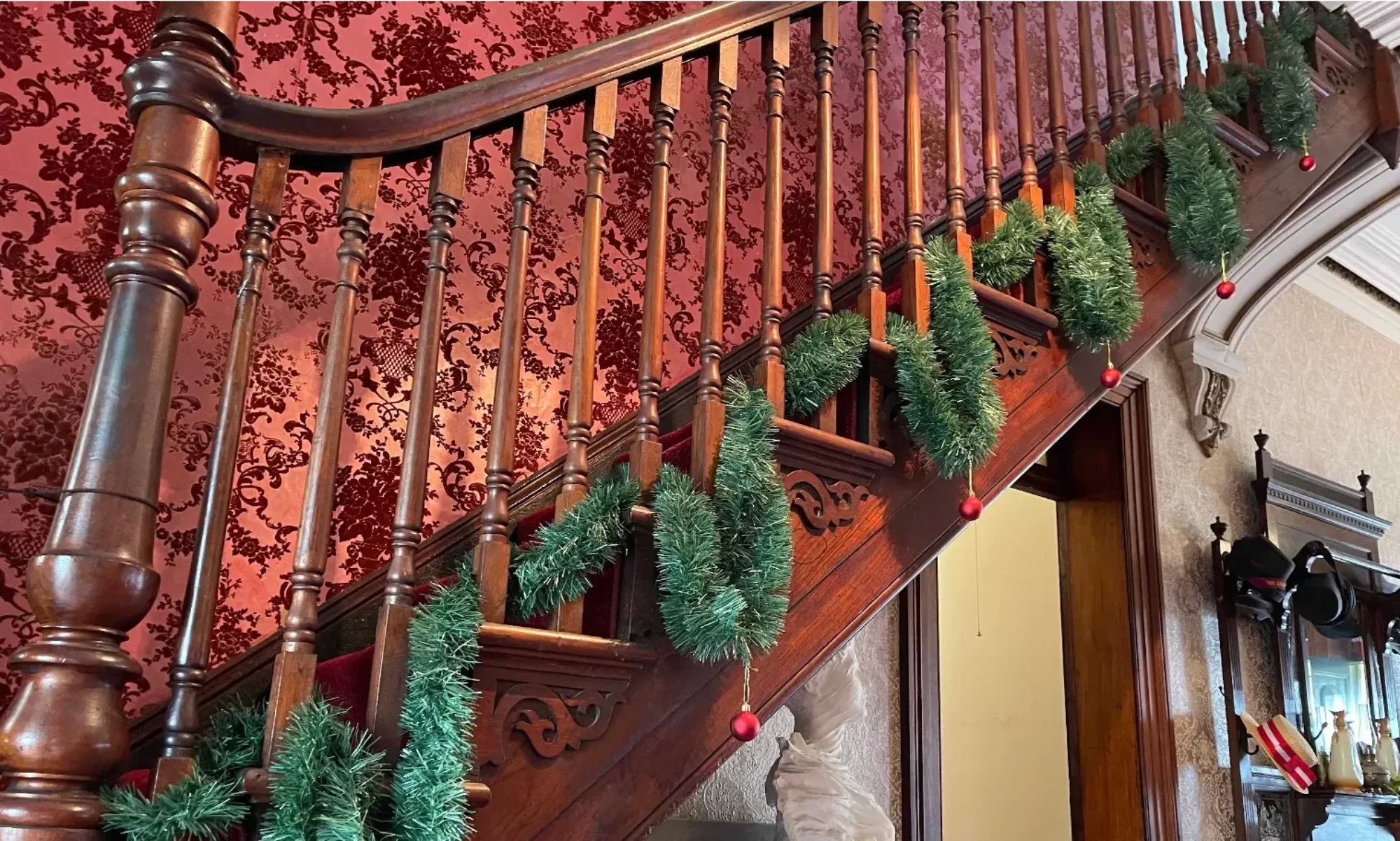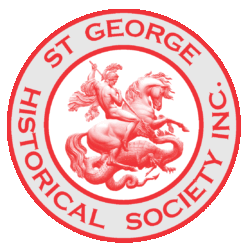Rockdale Heritage Drive
Rockdale on historic Botany Bay was first sighted by Captain Cook in 1770. From his ship he saw what seemed to be lush, watered paddocks with low hills behind. However, the original landscape was in fact rocky outcrops, native heath vegetation and tall forest trees on the ridges.
After Sydney Cove was settled, development began in this area in 1805, with small farms. Later in the nineteenth century, Rockdale was seen as an ideal locality for the establishment of country villa estates. The railway and the car enabled the area to be more closely settled with detached houses characteristic of the late nineteenth and early twentieth century.
This 2-hour, 25km drive will give you an understanding of the original landscape, how the City developed, and highlights important natural areas, places and buildings which have been identified as heritage items, or of historic interest.
This guide was launched by Rockdale City Council during Local Government Week, August 1998 to encourage a broad appreciation of the city. It highlights points of interest in the 1991 Rockdale Heritage Study by Meredith Walker and Terry Kass. The Heritage Adviser, Gary Stanley, produced the guide. The council was merged in 2016 to form Bayside Council.
The first section on the eastern side of the Princes Highway incorporates remnant natural areas, evidence of early settlement, and later development in the 20th century. The western side of the highway features predominantly Victorian and turn of the century housing.
At selected locations, it is suggested that a walk will enable you to appreciate the area in greater detail and the two additional drives, Wolli Creek and Bayside, will enable a more comprehensive appreciation of the City.
- Rockdale Town Hall
This building in the Art Deco style was built in 1940, replacing an earlier building when the highway was widened. The Council Local History Library contains a collection and excellent research books specialising in family history and old photographs and maps.
Princes Highway was an important main road in the development of the area. Turn left into Chandler Street. This street contains an intact group of Californian Bungalow style cottages. - Banbury Cottage – 23 Chandler Street
An original farmhouse constructed in the 1870s’ is a reminder of Rockdale’s early days as a market gardening and orchard community.
Right and right again into Beach Street and back onto the Highway, left into Barton Street. On the right was the original Moore Land Grant of 1812. It was later the site of the Moorefield Racecourse (1888-1951) and developed with Post-War housing in the late 1950’s. - Scarborough Park
Part of the marshlands behind the coastal sandhills, which drain into the Cooks River. Originally mangroves fringed the water with casuarinas, tea trees, paperbarks and cabbage tree palms behind. The area is a significant natural habitat for many species of water birds. The park was dedicated in 1879. It is suggested that a stop here will enable you to appreciate this area in greater detail.
Left into Grand Parade. Edging historic Botany Bay, this busy road has many large houses taking advantage of the water views. Left into Teralba Street, which has an interesting collection of Californian Bungalow houses. “Teralba” is an Aboriginal name meaning “edible bush”. Right into Crawford Road and right again into Bay Street. Left into Princess Street. It is suggested a stop in Princess Street and a walk over the pedestrian bridge will enable you to appreciate Lady Robinson Beach and views to Botany Bay Heads. - Brighton-Le-Sands
In the early 19th century Botany Bay became the pleasure ground of the fashionable and wealthy of Sydney. In 1885 a tramway from Rockdale Station linked to the beach along Bay Street. The two brick pavilions in the Grand Parade are reminders of the Brighton Baths opened in 1886. - First Fleet Memorial
Erected for the Bicentenary in 1988 and designed by Mr Tierney of Terrey Hills. - The Terraces
One of the few groups of Victorian terraces in Rockdale. built in 1887 for land developer Thomas Saywell.
Travel along Moate Avenue and Jacobson Avenue. Turn left into Beehag Street and Occupation Road. - Market Gardens
The market gardens cover an area of 8 hectares (20 acres) and are one of the few remaining examples of a once more common land use in Rockdale and inner Sydney. Probably continuous gardens since 1892.
Right into Bestic Street, right into West Botany Street and left into Wickham Street. Right into Firth Street, Arncliffe at traffic lights. - Arncliffe Post Office
This building in Federation Queen Anne style was opened in 1898. It replaced earlier post offices established in a nearby hotel and railway station. - Arncliffe Railway Station
Single storey Victorian Italianate style designed in the office of NSW Government Railways. It was opened in 1884 as the Illawarra Road Station.
Under the Railway and along Arncliffe Street to … - Tempe House – Mount Olympus
Tempe House was built in 1836 and designed by archi tect John Verge, for Alexander Brodie Sparks. The house will feature in a major urban renewal of this area of North Amcliffe which will see this house prominently located in the new town square.
Back along Arncliffe Street and into Wollongong Road. This main road was surveyed by Major Mitchell in 1831. Convicts built the road which ran from the southern side of Cooks River near Tempe to the crossing of the Georges River at Lugamo. It was the original road alignment to the lllawarra District. Right at the lights into Kelsey Street and left into Hirst Street. This street was named after an early land owner in the area. - Arncliffe Park
The park was originally the property of Mr Kim Too and was cultivated as a market garden. In March 1889 Kim Too’s garden was officially proclaimed as a public park. About 1904 the avenue of trees was planted and a small grandstand was built near where the War Memorial is now situated.
Left into Dowling Street and right again into Wollongong Road. - Dappeto, Fairview, Belmont
Three grand mansions built in the 1880’s in the Victorian Style. Fairview and Belmont are identical houses built by brothers with their wealth from the Gold Rush. Belmont was restored and reopened in May 1997. - Lydham Hall
Constructed in c.1860. for wealthy master butcher Joseph Davis.
The residence is now a house museum owned by Bayside Council and open to the public.
Left into Herbert Street, right into Tyrell Street, left into Frederick Street and right into Linwood Avenue. Both Herbert and Frederick are named after the sons of Joseph Davis of Lydham Hall. Frederick Street contains a fine collection of a range of houses from each of the development periods of Rockdale.
Left into Harrow Road and right into Gladstone Street. Both these streets have interesting period buildings including the Uniting Church.
Right into Dunmore Street, left along Forest Road and left into Queen Victoria Street. These three streets contain important houses mainly in the Federation style and in Forest Road there are important public builiding including the School of Arts and Masonic Hall.
Right into Connemarra Street, left into Verdun and left into Wolseley Street. These streets contain many fine examples of homes built in the Federation and Californian Bungalow styles.
Left into Dunmore again to … - Seaforth Park
An important park in Rockdale and the focus of the Ocean View Estate auctioned in 1883.
Turning into Watkin Street and right into Frederick Street past many fine Federation houses will bring you back over the railway line to the Highway and Town Hall.

